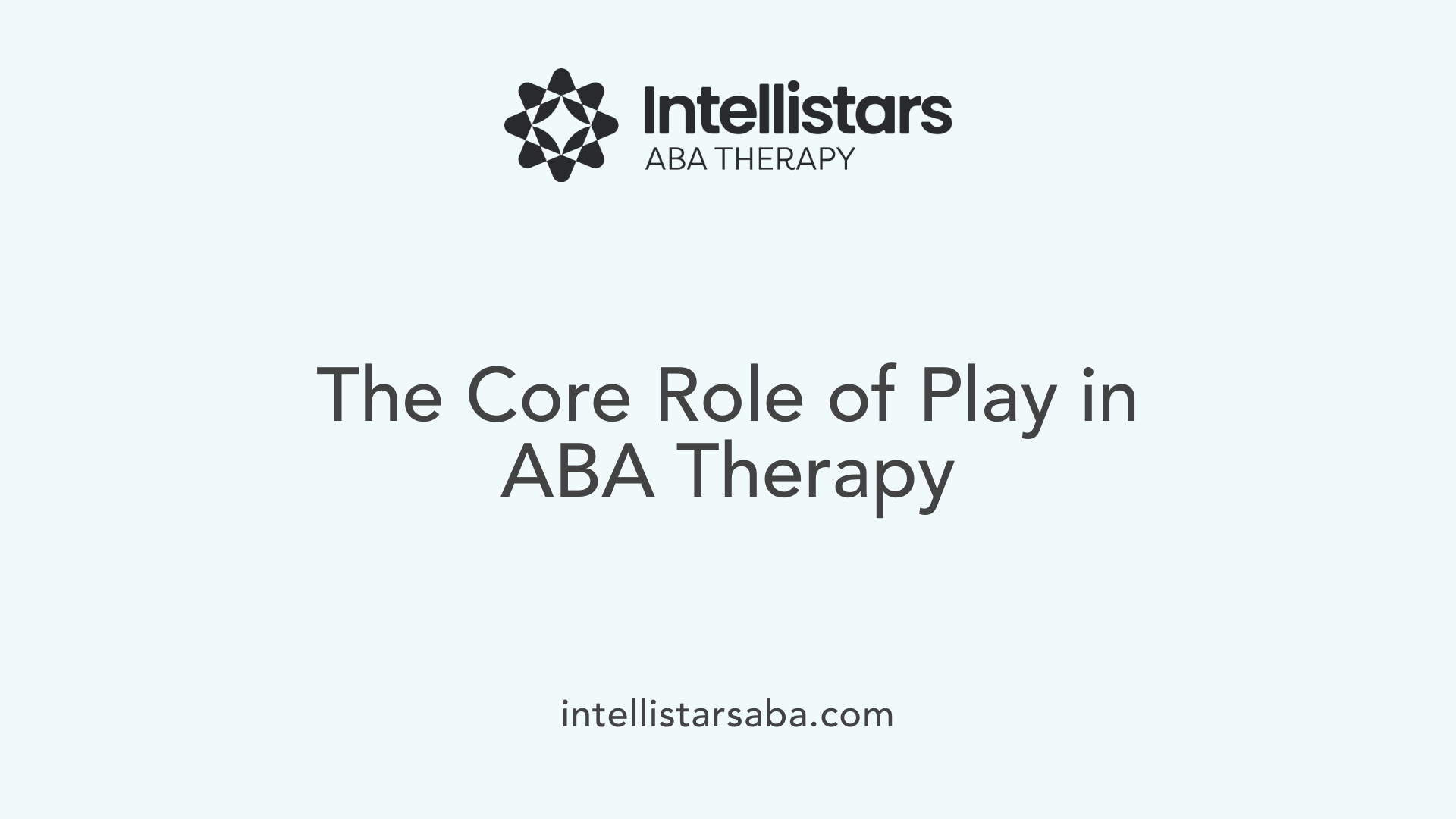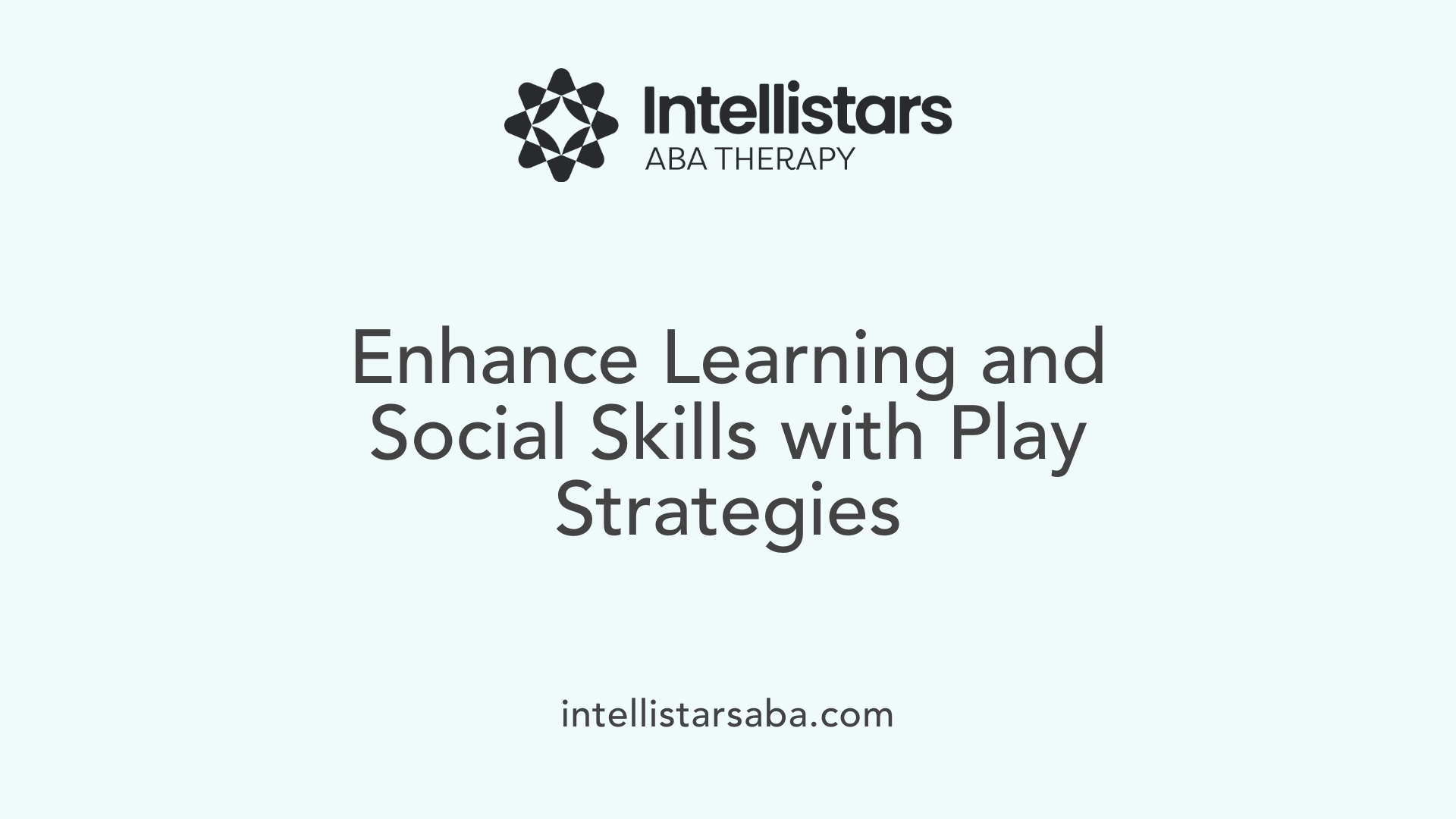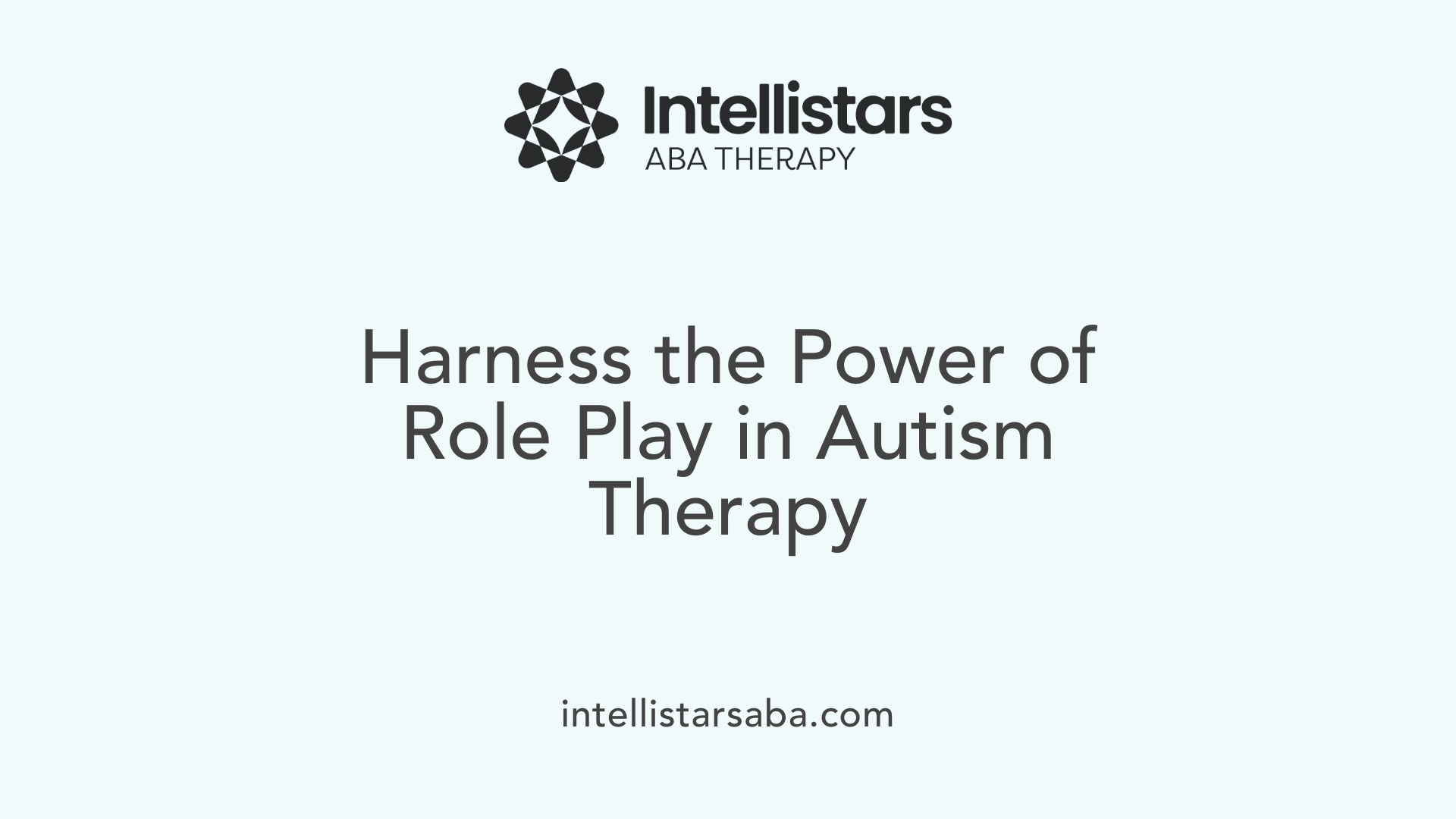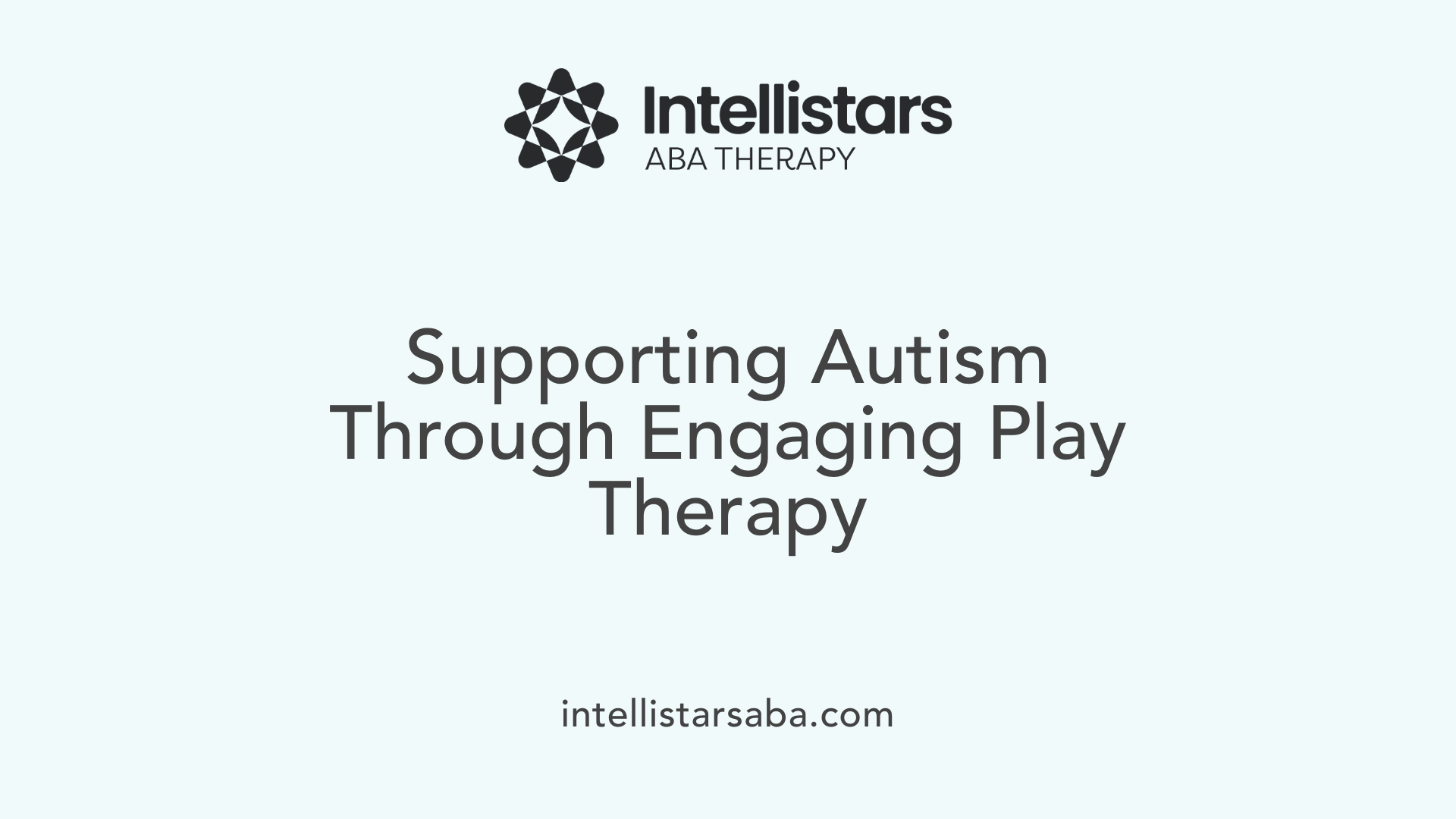Introduction to Play in ABA Therapy
Play is a fundamental component of early childhood development, and its integration into ABA therapy significantly enhances learning, social interaction, and emotional growth for young children with autism spectrum disorder (ASD). By creating engaging, motivating, and natural learning environments, play serves as both a therapeutic tool and a catalyst for developmental progress. Recognized as a core strategy, play in ABA therapy is tailored through various approaches to meet individual needs, making therapy sessions more effective and enjoyable.
The Fundamental Role of Play in ABA Therapy

What is the role and importance of play in ABA therapy for young children?
Play holds a central place in ABA (Applied Behavior Analysis) therapy, especially for children with autism spectrum disorder (ASD). It provides a natural, engaging, and motivating environment that encourages children to develop essential skills such as communication, social interaction, problem-solving, and emotional regulation.
Incorporating play into therapy sessions helps increase a child's motivation to participate and learn. It makes therapy more enjoyable and less intimidating, fostering a sense of trust between the child and therapist. Using play, therapists can effectively target specific developmental goals by embedding learning activities into fun routines, which promotes active participation.
Different methods of play are employed in ABA therapy, including structured play, naturalistic play, and child-led activities. Structured play involves using specific toys and routines designed to target particular skills, while naturalistic play incorporates learning into everyday activities aligned with the child's interests. Child-led or free play allows children to explore activities of their choice, supporting independence and creative expression.
Play also influences brain development profoundly. It induces neuroplastic changes, enhances neural connections, and promotes the formation of new neural circuits. These changes support improved cognitive, social, and emotional functions, which are vital for overall development.
In summary, play in ABA therapy is not merely an add-on but a core strategy. It creates an engaging learning environment, helps children acquire and generalize skills across settings, and promotes emotional well-being. By making learning fun, play encourages children to participate actively, facilitating their overall growth and development.
Integrating Play Strategies for Effective Learning and Social Skills Development

How does play contribute to learning and social skills in children undergoing ABA therapy?
Play is an essential part of ABA therapy because it creates a natural, engaging environment that encourages children to develop key social and learning skills. It offers opportunities for children to practice social interactions such as sharing, turn-taking, and cooperating, often in enjoyable and motivating ways.
Therapists incorporate different types of play—such as structured play, free play, and sensory activities—to teach specific skills. For example, role-playing and pretend scenarios enable children to learn social cues, develop joint attention, and improve communication. These activities not only foster social skills but also help children adapt behaviors from therapy to everyday settings like home or school.
Play-based activities enhance emotional regulation by allowing children to experience and navigate frustrations or challenges within a safe space. They also develop problem-solving skills as children encounter obstacles in play and learn to resolve them, which builds resilience.
A vital aspect of play's role in ABA therapy is its ability to motivate and keep children engaged. When play is integrated as reinforcement, children show increased enthusiasm for learning new skills. This engagement supports the generalization of skills, making learning more meaningful and lasting.
Furthermore, play fosters intrinsic motivation, which makes therapy sessions enjoyable and more effective. In essence, play supports not only cognitive and social development but also emotional resilience and independence. The integration of play within ABA therapy helps children build a foundation for successful communication, social interaction, and adaptive behavior.
Examples of play-based activities that promote social interaction and communication
| Activity Type | Description | Developmental Benefits |
|---|---|---|
| Role-playing | Acting out real-life scenarios like grocery shopping or doctor visits to practice social cues | Enhances social understanding, language use, and emotional recognition |
| Board games | Playing turn-taking games like Candy Land or Chutes and Ladders | Promotes patience, taking turns, and understanding rules |
| Imaginative play | Using toys to create stories or scenarios, like playing house or pretending with dolls | Fosters creativity, language, and social exchanges |
| Sensory play | Activities involving textures, lights, sounds to stimulate senses and engagement | Supports regulation and attention, encouraging communication through responses |
| Outdoor play | Physical activities like running, swinging, or playing tag | Builds cooperation, social interaction, and motor skills |
These activities are tailored to match each child's interests and developmental level, maximizing engagement and learning outcomes. Parental involvement in play further reinforces newly acquired skills and extends learning outside of therapy sessions.
The impact of play on emotional regulation and problem-solving
Play significantly influences a child's emotional and cognitive development. It helps children learn to manage frustrations and tolerate changes, essential skills for emotional regulation. For example, engaging in turn-taking or waiting during games teaches patience and impulse control.
Problem-solving is naturally embedded in play; whether figuring out how to complete a puzzle or resolve a conflict with a peer, children encounter challenges that require critical thinking and resilience. These problem-solving experiences translate into real-life situations, enabling children to navigate daily challenges more effectively.
Play activities like pretend dressing or shopping set the stage for practicing independence and decision-making. Through these processes, children learn to evaluate options, make choices, and handle the outcomes—all vital for functional autonomy.
Research supports that play influences brain development by inducing changes such as increased neural connectivity and neuroplasticity, especially in regions responsible for cognition and emotion regulation. Play encourages the formation of new neural circuits, boosting the production of neurotrophic factors like BDNF and modulating neurotransmitter levels, which collectively enhance learning capacity and emotional stability.
In summary, play in ABA therapy is more than just fun; it is a powerful tool that promotes emotional control, enhances problem-solving capabilities, and prepares children with autism to handle real-life social and emotional demands. Its role in fostering resilience and cognitive flexibility makes it an indispensable component of comprehensive autism intervention strategies.
The Significance of Role Play and Its Application in Autism Therapy

What is the role of role play in autism therapy?
Role play serves as a fundamental part of autism intervention strategies, offering a controlled, engaging method for practicing essential social and emotional skills. By simulating everyday situations, children with autism can safely explore social interactions, enhance their communication abilities, and develop appropriate responses.
Within therapy settings, role play involves children acting out scenarios that mirror real-life experiences, such as greeting others, sharing, or resolving conflicts. This approach helps children recognize social cues like facial expressions, body language, and tone of voice, which are often challenging for individuals on the autism spectrum.
Moreover, role play supports emotional regulation by providing opportunities to express feelings in a safe environment. Children learn to manage their reactions, develop patience, and understand others’ perspectives. Visual aids, scripts, and defined scenarios are integrated to aid comprehension, making social situations less intimidating.
It also encourages behaviors like making eye contact, turn-taking, and cooperative play, fostering skills necessary for independence. Overall, integrating role play into autism therapy enhances social understanding, boosts confidence, and promotes more adaptive behaviors.
Using role play to recognize social cues and improve communication
One of the main benefits of role play is its ability to improve a child's capacity to notice and interpret social cues. Children often struggle with understanding subtle signals such as facial expressions or gestures, which can lead to social misunderstandings.
In practice, therapists create situations where children practice identifying emotions in others and responding appropriately. For instance, a child might role-play greeting a friend and then practice reading the friend's facial expression to determine if they are happy or upset.
Through repeated practice, children become more adept at recognizing these cues in everyday life. Role play also emphasizes verbal and non-verbal communication, teaching children how to initiate conversations, take turns speaking, and use appropriate gestures.
Scripts and prompts help guide children in using language effectively, shaping their responses to social interactions. This active learning process significantly enhances communication skills, making social exchanges more natural.
Reducing anxiety and increasing confidence through simulated scenarios
Role play provides a supportive environment where children can face social challenges without fear of real-world repercussions. By practicing scenarios like asking for help or handling disagreements, children gradually build resilience and confidence.
This method helps reduce anxiety related to unfamiliar social situations. When children rehearse and become familiar with the steps involved, they feel more prepared and less overwhelmed.
Increased confidence in social settings can translate into greater independence, improved self-esteem, and more positive interactions outside therapy sessions. Simulated scenarios also allow children to experience success, encouraging persistence and effort.
Therapists often incorporate a variety of scenarios suited to the child's interests and developmental level to maximize comfort and engagement. Over time, these practice sessions help children navigate real-life social environments more effectively, contributing to their overall emotional well-being.
Supporting Children with Autism Through Play Therapy

How can play therapy support children with autism?
Play therapy offers a versatile and stimulating environment for children with autism, enabling them to express themselves, develop vital social skills, and enhance communication. It provides a safe space where children can transition from maladaptive behaviors to productive and appropriate ways of self-expression, utilizing toys, role-playing, sensory activities, and arts and crafts tailored to each child's preferences and developmental level.
Different types of play therapy, including sensory integration, child-centered play, and group play, are adapted to target specific challenges faced by children on the spectrum. These approaches facilitate social interaction, reduce anxiety, and bolster emotional regulation. For instance, sensory play can help children manage sensory sensitivities, while group play encourages sharing, cooperation, and communication.
Play therapy also fosters trust and builds a positive rapport between the child and therapist. This relationship is crucial as it motivates children to explore, learn, and grow in a supportive environment. Often integrated with occupational and speech therapies, play-based approaches reinforce skills and promote overall development.
Though more research is needed to establish definitive outcomes, evidence suggests that play therapy can significantly improve social skills, decrease challenging behaviors, and support emotional well-being. Its flexible nature makes it a promising, engaging, and safe complement to other autism interventions.
Different types of play therapy used in autism intervention
| Type of Play Therapy | Description | Benefits | Suitable For |
|---|---|---|---|
| Sensory Integration | Uses sensory-rich activities to help manage sensitivities | Enhances sensory processing, reduces anxiety | Children with sensory sensitivities |
| Child-Centered Play | Child-led activities following the child's interests | Builds trust, encourages self-expression | Young children with limited communication |
| Group Play Therapy | Interactive activities involving peers | Improves social skills, cooperation | Children who need social skills development |
| Art and Creative Play | Uses arts, crafts, and imagination | Fosters emotional expression, reduce stress | Children receptive to creative activities |
| Equine-Assisted Play | Involves interaction with horses | Enhances emotional regulation, trust | Suitable for children adaptable to outdoor settings |
Tailoring play activities to individual interests and developmental levels
One of the most effective strategies in play therapy is customizing activities to match each child's unique interests and developmental stage. Therapists carefully observe and select toys and activities that resonate with the child's preferences, whether it’s building blocks, pretend play scenarios, or sensory bins.
Adapting complexity and type of play helps ensure engagement and challenges the child appropriately. For example, a child who loves animals might enjoy role-playing veterinary scenarios, fostering communication and social skills.
Progression is also key—activities are gradually made more complex or varied as the child develops new skills. This individualized approach maximizes motivation, promotes learning, and facilitates the transfer of skills to everyday settings.
Building trust and rapport through play-based approaches
Establishing a trusting relationship is fundamental in play therapy. Play creates a natural, relaxed environment where children feel safe to explore and try new behaviors. Therapists use play to connect with children on their terms, which encourages openness and cooperation.
Through deliberate and caring interactions, therapists help children feel understood and supported. Parental involvement, where appropriate, further reinforces this bond as children practice skills at home.
Play-based approaches also allow therapists to observe responses, gauge progress, and adjust strategies in real-time. This ongoing, nurturing process not only promotes skill development but also enhances emotional security, making therapy more effective.
In summary, integrating varied play therapy techniques, personalizing activities, and fostering strong therapeutic relationships are vital for supporting children with autism in their developmental journey.
Benefits and Implementation of Play Strategies in ABA Practice
What are the benefits of incorporating play strategies into ABA therapy?
Incorporating play strategies into ABA therapy offers a wide range of advantages that significantly enhance a child's developmental journey. Play serves as an engaging and motivating environment, making learning activities more appealing and less stressful for children with autism.
One of the primary benefits is fostering overall development—cognitive, social, emotional, and physical—by providing natural contexts for practicing essential skills. For example, through play, children learn to communicate effectively, share, cooperate, and solve problems, which are crucial for daily functioning.
Play also supports neural growth by encouraging neuroplasticity and strengthening neural connections in key areas of the brain such as the prefrontal cortex, cerebellum, amygdala, and hippocampus. These changes contribute to better emotional regulation, improved social interactions, and enhanced cognitive abilities.
Furthermore, play facilitates the transfer of learned skills to real-world settings, promoting generalization across environments like home and school. When children practice skills in playful, meaningful contexts, they are more likely to retain and use these skills outside of therapy sessions.
Another notable benefit is increased motivation. Play activities naturally motivate children to participate and engage, which leads to more effective learning. Using preferred toys and activities keeps children invested in therapy, encouraging persistence and resilience.
Play also helps children develop emotional resilience by allowing them to experience and manage frustrations in a safe environment. This builds their capacity to cope with changes and challenges in everyday life.
Therapists often tailor play activities according to each child's interests and developmental level, which maximizes the impact. These activities can include board games, imaginative play, outdoor activities, and sensory play. Incorporating fun routines helps children develop independence, such as dressing or shopping, through simulated play.
Parental involvement through play is essential. When parents actively engage in play-based strategies, they reinforce skills learned in therapy, strengthen relationships, and extend learning beyond clinical settings.
On a practical level, play-based ABA allows therapists to assess progress naturally. They observe responses, initiation, and behaviors during play, collecting valuable data to shape ongoing intervention strategies.
It is important to note that, although evidence continues to grow, more controlled studies are needed to definitively establish the full efficacy of play therapy for autism. Nonetheless, existing research indicates that play strategies are safe, cost-effective, and a promising adjunct to traditional interventions.
How is play integrated into ABA practice?
Play is a cornerstone of ABA therapy designed to create motivating, natural, and enjoyable learning experiences. Therapists often use structured play activities that embed learning targets into routines, such as turn-taking games or pretend scenarios, to make skill acquisition enjoyable.
Naturalistic play involves incorporating learning into everyday activities based on the child's interests, like shopping or dressing up, promoting the generalization of skills.
Different play techniques, including child-centered play therapy, floor time, art therapy, and equine-assisted therapies, are tailored to individual needs. These approaches focus on empowering children to express themselves comfortably and develop social and communication skills.
Play activities also serve as reinforcement tools, increasing motivation and participation during sessions. For example, rewarding a child for initiating contact or completing a task during play encourages continued engagement.
Parent-training sessions often include strategies for incorporating play at home, which reinforces learning and provides consistent practice. Activities are designed to be adaptable for various developmental levels and personal interests.
Therapists observe and document progress during play, using behaviors, responses, and engagement levels to adjust interventions accordingly. Through this process, they foster the development of emotional regulation, resilience, and social competence.
Overall, integrating play into ABA therapy creates a dynamic and supportive environment that not only facilitates skill development but also nurtures enjoyment and emotional well-being.
Practical Approaches to Implementing Play in ABA Therapy

How is play implemented within ABA therapy for children with autism?
In ABA therapy, play serves as a vital tool to make learning engaging and effective. Therapists often blend structured and naturalistic play activities tailored to each child's preferences and developmental level.
Structured play involves routines and specific toys or activities designed with clear objectives in mind. For instance, therapists might use role-playing, modeling, or follow a set sequence to teach particular skills such as sharing, turn-taking, or communication. These activities help children learn social and daily living skills while maintaining a fun, motivational environment.
Naturalistic play, on the other hand, integrates learning into everyday activities based on what the child enjoys or finds interesting. This might include playing with toys during free play, engaging in pretend play related to real-life situations (like grocery shopping or dressing up), or using natural settings like outdoor play.
Reciprocal or back-and-forth play, such as engaging in joint attention tasks and responsive interactions, is crucial. It encourages social interaction, language development, and emotional regulation.
Incorporating play into therapy also fosters trust and positive rapport between children and therapists, making children more open and responsive to teaching. Importantly, play provides opportunities to reinforce appropriate behaviors and build motivation, which are essential for skills generalization in real-world settings.
Natural environment teaching (NET) and other methods
Natural environment teaching (NET) is a pivotal technique in ABA that emphasizes learning in contexts that are meaningful to the child. This approach involves observing the child's interests and structuring play scenarios around these motivations, thus promoting spontaneous and functional use of skills.
For example, if a child enjoys playing with bubbles, the therapist might incorporate bubbles into the session to teach requesting or commenting. When the child successfully initiates an interaction or requests an item during play, it reinforces communication skills.
Other methods include floor time, where therapists follow the child's lead, and art-play therapy, which combines creative expression with social and communication goals. Equine-assisted play therapy involves horse riding and interaction, promoting social skills and emotional regulation.
The goal across these techniques is to embed learning into natural, engaging activities, making skill acquisition more robust and meaningful.
Customizing play activities for developmental appropriateness
Every child has unique interests and developmental needs, so customizing play activities is essential. Therapists assess the child's current skills, preferences, and developmental stage before selecting suitable toys, games, and activities.
For younger children or those with limited play skills, simple and familiar toys like blocks, puzzles, or basic pretend play items are used. As children develop, activities can become more complex, involving problem-solving games, imaginative scenarios, or multi-step routines.
Customization also involves adapting play in response to the child's behavior and progress. If a child shows particular interest in certain topics, therapy can revolve around those interests to motivate learning.
Furthermore, considering sensory preferences—such as tactile or visual stimuli—helps make play more accessible and enjoyable. This tailored approach enhances engagement, accelerates skill acquisition, and fosters positive emotional experiences with therapy.
Conclusion: Embracing Play for Holistic Development
Incorporating play into ABA therapy is essential for fostering engaging, personalized, and effective interventions for young children with autism. Play not only motivates children to participate actively but also facilitates the transfer of learned skills to real-life situations, covers key developmental domains, and builds vital social, communication, and emotional skills. As research continues to evolve, the recognition of play’s central importance in early intervention underscores its value as a powerful, safe, and cost-effective tool in promoting meaningful developmental outcomes. Embracing play in ABA therapy embodies a child-centered approach that respects each child’s unique interests and strengths, ultimately supporting their journey toward greater independence, confidence, and social integration.
References
- The Role of Play in ABA Therapy | Behavioral Consulting for Autism
- Play therapy in children with autism: Its role, implications, and ...
- Why Play is Essential to ABA Therapy for Children: A Deep Dive
- Understanding the Role of Play in ABA Therapy
- How Early Intervention ABA Therapy Uses Play To Teach
- Play therapy in children with autism: Its role, implications, and ...
- Play Therapy's Role in Pediatric Autism Services for Kids
- Play Therapy for Autism: Benefits, Techniques & Tips - Forbrain






